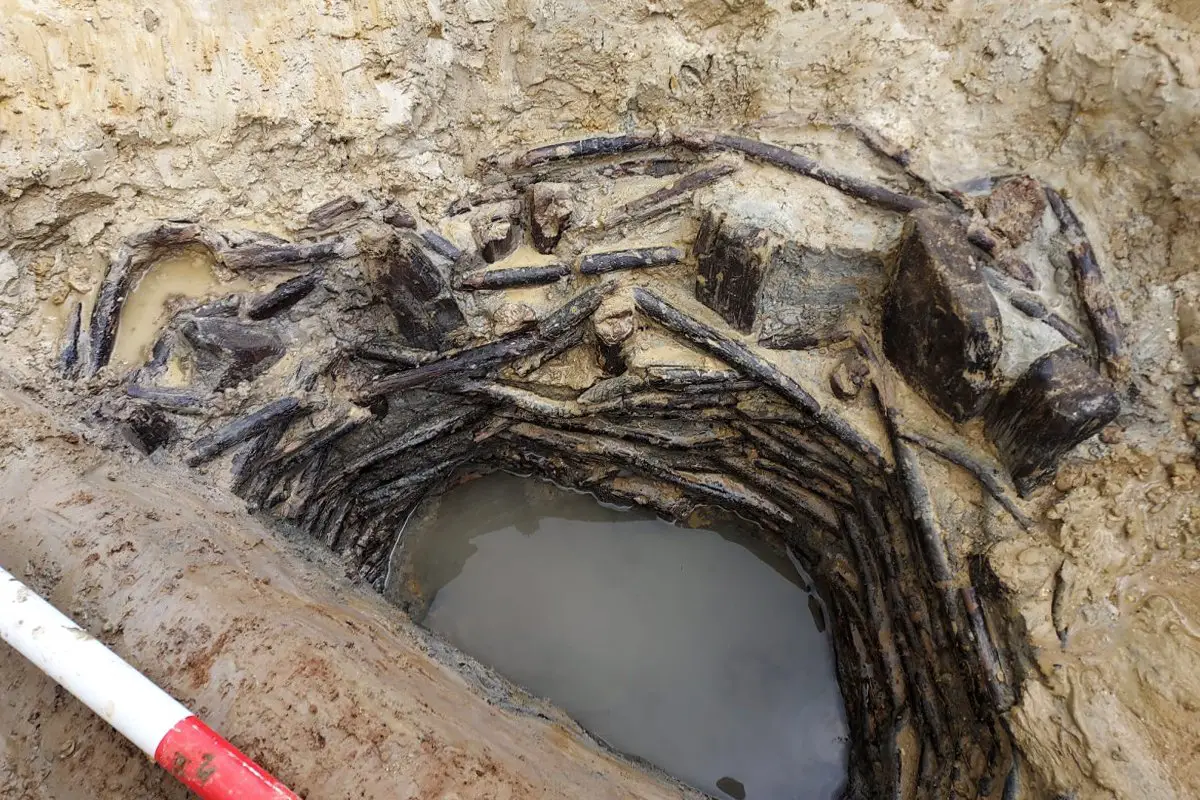Archaeologists from Oxford Archaeology have uncovered a well-preserved Bronze Age wooden well in Oxfordshire, England.
The discovery was made during construction works for the Benson Relief Road in compliance with planning conditions to ensure archaeological finds are recorded.
John Boothroyd, Senior Project Manager at Oxford Archaeology, said: “When investigating what appeared to be a standard pit for the site, the archaeological team started exposing the remains of a preserved wooden post driven vertically into the ground.”
Excavations revealed that the posts formed the uprights of a wattle structure lining the edge of the pit, which have been well-preserved due to the soil conditions being waterlogged.
The timber structure was digitally recorded, before being carefully dismantled by hand for removal to the Oxfordshire Museum Service.
Samples of the preserved wood have been sent for further analysis to indicate the type of wood used in the construction. Excavations also found pieces of struck flint, animal bone and pottery used for storage and waste.
Previous studies of the area around Benson and as far as Wallingford have revealed traces of Bronze Age activity and settlement.
“Despite the extremely challenging conditions, the team were able to expose and fully record the well. The specialist soil samples collected will also help establish what the surrounding landscape would have been like, and the intensity to which it was settled, when the well was actively being used.”
Councillor Judy Roberts, Oxfordshire County Council’s Cabinet Member for Infrastructure and Development Strategy, said: “This find gives fantastic insight into the area’s past land use. It is thought the well may have been used for agricultural irrigation purposes for settlements nearby. Archaeological surveys like this are an important part of the process of delivering construction schemes. They help us identify and understand past residents of the area and record them for future generations.”
Header Image Credit : Oxford Archaeology
Sources : Oxfordshire County Council





